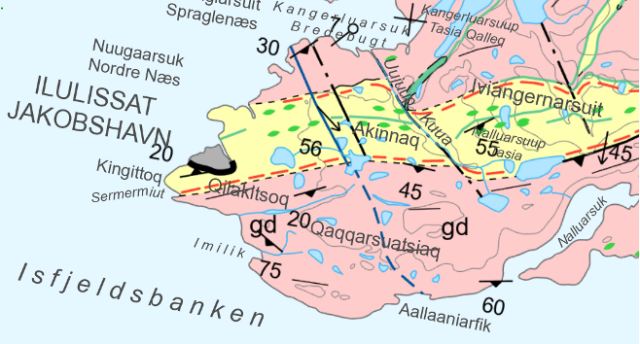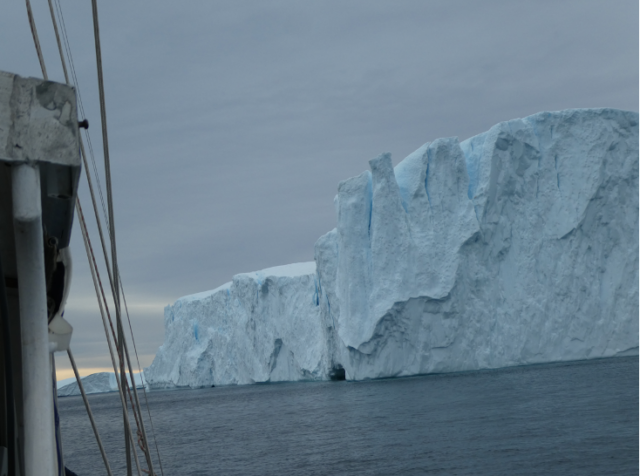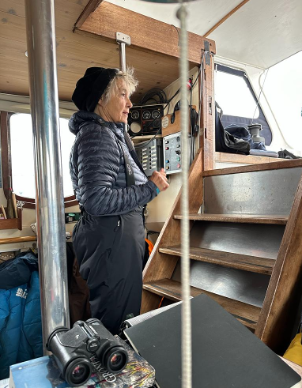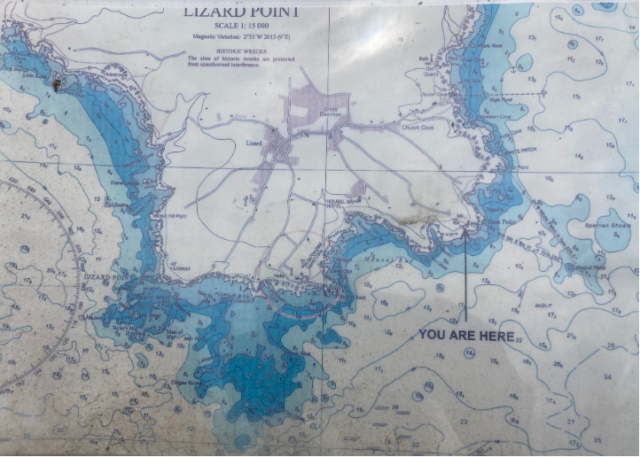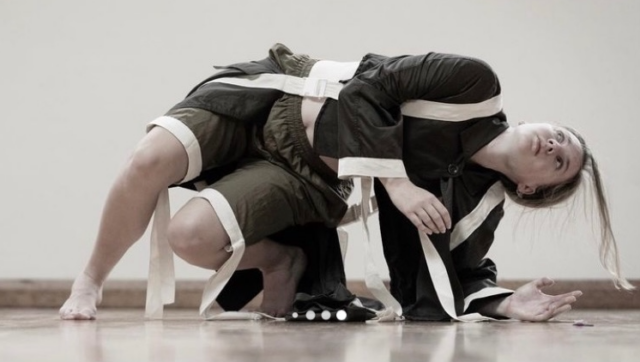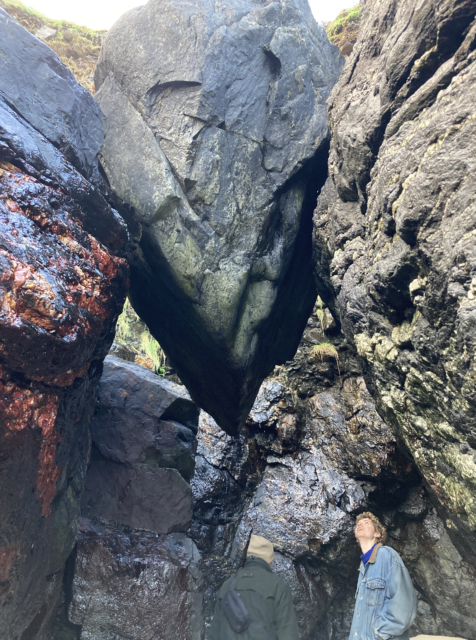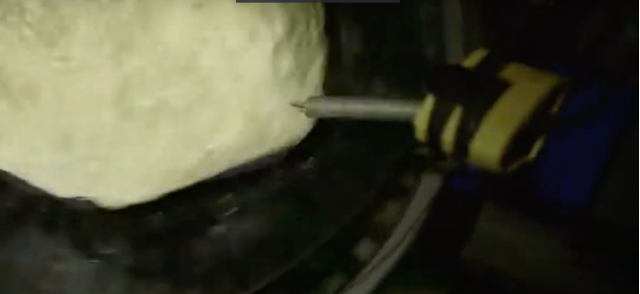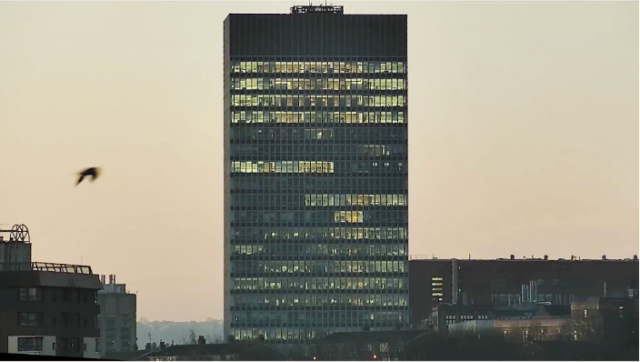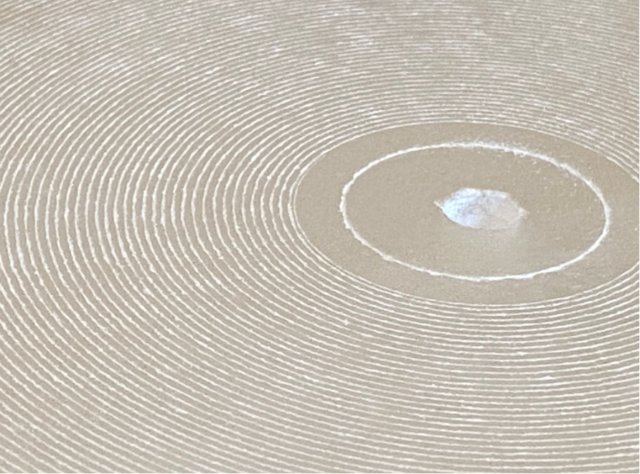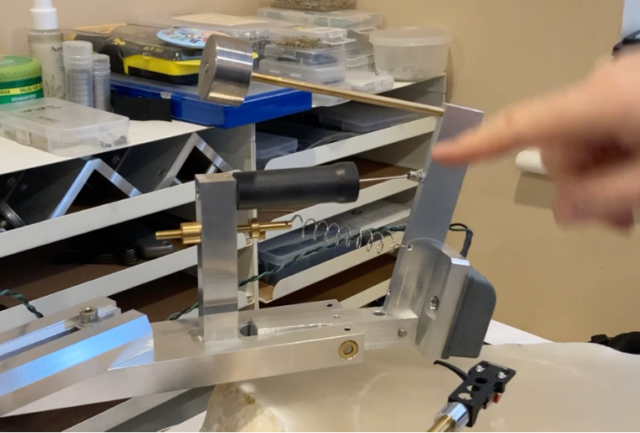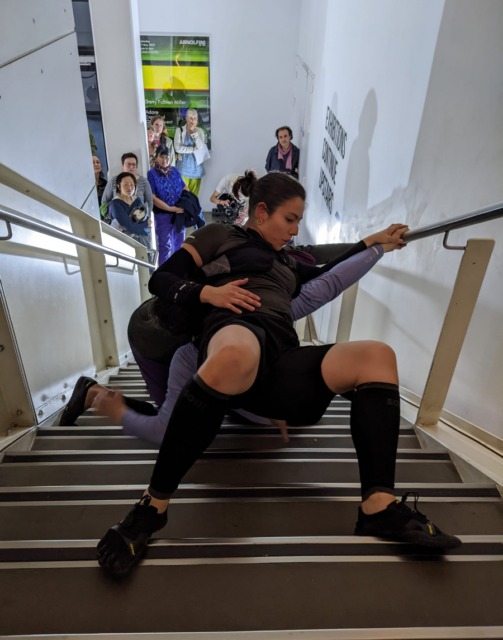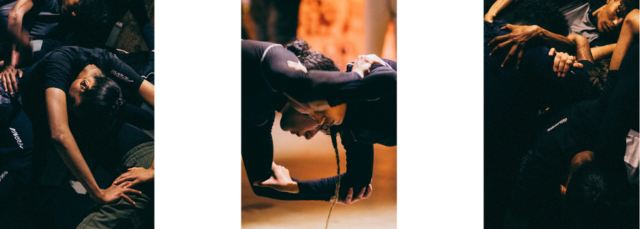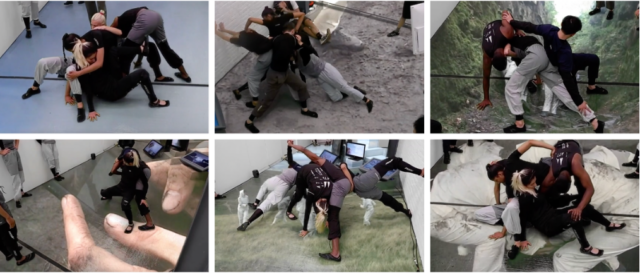FLAGS ON THE BEACH – 2023
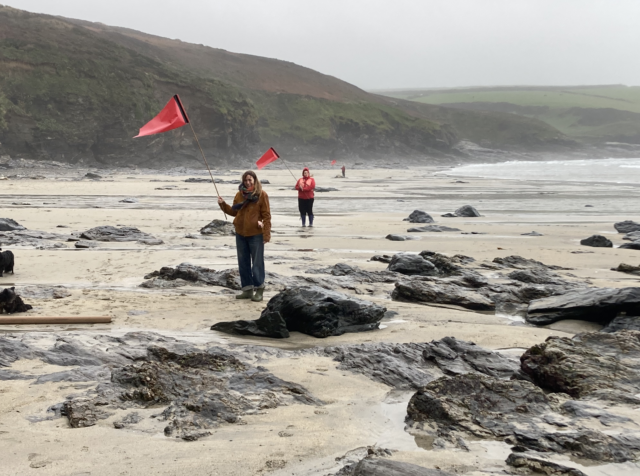
Geological Time and Stone Turntable R&D – 5
The flags placed at spaced intervals show to scale when rock was formed: I meter represents 23 million years (I know that’s nuts)
Forming of alabaster gypsum Zaragoza Spain 23 million years ago (first flag)
Forming of the Lizard peninsular Cornwall 400 million years ago (second flag)
Forming of Nuk gneiss Illulisat Greenland 3.2 billion years ago (third flag)
Information
These three dates in geological time, time that spans the life of the earth, feature as information researched in the project Geological Time and Stone Turntable R&D. Bringing Spanish, Cornish and Greenlandic strands of exploration I managed to plot them in a geological chart informing me of my experience of the planet I live on and its own life.
The descriptions and information below show:
1.time frames for the rocks of the project
2.comments on cultural and cultural attitudes concerning rock

Geological Society of America – A chart of unimaginable time frames
Time Frames
Cornwall
In Cornwall I became interested in the vast differences of sound in time and space, when recording sound for a dance piece Deep Time Moving situated on the Lizard. I learned from consultant geologist Dr Beth Simmonds that the Lizard in Cornwall was formed during the Devonian period, roughly 400 million years ago:
“The rocks at the Lizard are part of an ophiolite – a piece of oceanic crust that has been uplifted onto continental crust. When the rocks of the Lizard were formed around 400 million years ago, the area was completely submerged by water. The area of what is now Cornwall was at that time a divergent plate margin and new igneous rocks were being created as two oceanic plates moved apart at a spreading ridge. As the plates moved apart, molten rock rising up from the mantle filled the space created and cooled to form new oceanic floor.
The minerals that form in these rocks are stable below the crust, where pressure and temperature is high and there is no water. Once formed however, these rocks come into contact with water which can cause alteration through a process called hydrothermal metamorphism. At the rocks seen at the Lizard, this alteration created the mineral serpentine which is found in the rock serpentinite.”


Photo from website – Serpentine rock found on the lizard and recording on and in lizard rocks (although not Serpentine here on the right)
Greenland
Greenland – Illulisat , a small port on the west coast of Greenland, is sitting on some of the most ancient rock on the planet. Where only rock found in Australia in older. Beneath the snow and ice is largely gneiss (yellow on the map) and granite (pink). The gneiss is known as the Nuk gneiss and this was formerly a granodiorite (igneous rock) that has been metamorphosed. The pink is mixed Nuk gneiss a. Both are It is Neoarchaen to Mesoarchaen in age. This is 3.2-2.5 billion years old.

View of rocky landscape outside my hostel at the back of Illulisat
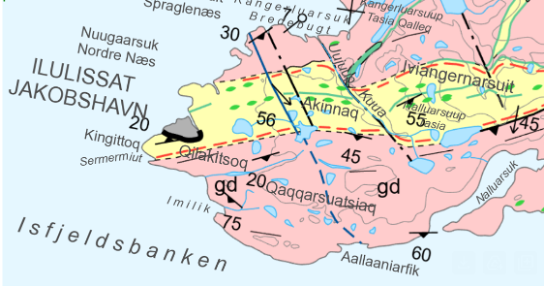
Gneiss rock (yellow) and Granite (pink)

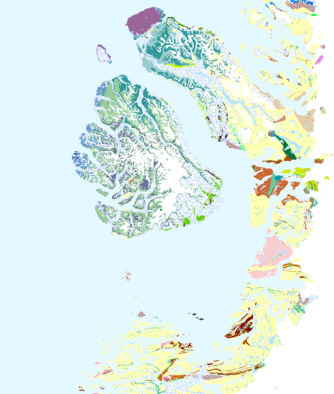
Greenland with rock types visible and Disko bay (Qeqetarsuup) and Disko Island (Qeqertarsuaq) and Illulisat visible.
Zaragoza
Zaragoza In northern Spain at the Aragon district there are quarries for gypsum alabaster. Formed in lagoons 13-23 million years ago.
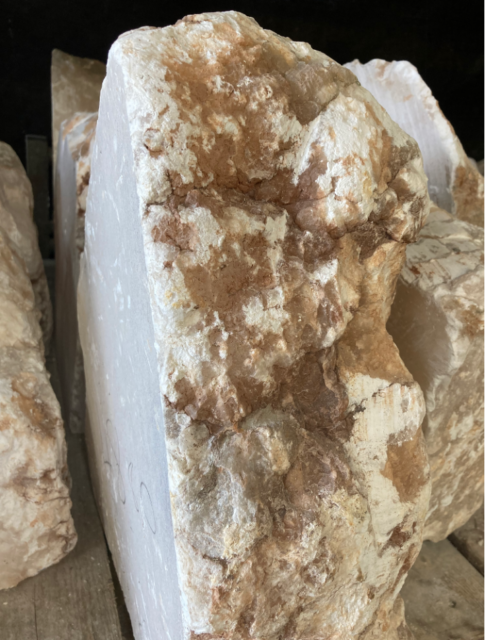
Photo Gypsum alabaster cut but still rough


Photo https://doi.org/10.1007/s12371-023-00878-x
The top pictures here you can see the layers of escarpment with gypsum and mud stone found embedded. As I understand in this article, the Ebro River in the past has been the key to the formation of the gypsum.
The geological rock record of this area as stated in this article says;
“The key geoheritage value of the ‘Tauste—Juslibol’ escarpment in terms of rock record lies in an excellent, almost uninterrupted, continuous exposure of the Miocene continental sedimentary flow of the Ebro Cenozoic Basin…….. The outcrops are dominated by alternating gypsum and mudstone/marl packages of variable thickness…”
The gypsum which became compacted from different minerals and sediments settled in subcutaneous pools, solidified, and has become gradually exposed for surface mining for its qualities for centuries.
Indonesia
Indonesia – vibration recorded from the Sulawesi earthquake was recorded via seismometer in Bristol University. The earthquake, 7.4 came from Sulawesi Island – Indonesia, 02°S 121°E_ / _2°S 121°E 7,595 miles from UK. This was my starting point, to listen in to the noisy interior of the planet.
I have returned to the vibration/sound recorded in 2018 at the time of the Sulawesi /Indonesian earthquake to see these tectonic plates in relation to the other rocks in the project I have been finding out about. The quake was caused by the collision of tectonic causing havoc and destruction in its wake, and happened because the area where it occurred there are “a complex interaction of plates”….
https://en.wikipedia.org/wiki/2018_Sulawesi_earthquake_and_tsunami
These big plates can be “from a few hundred to thousands of kilometers across.” They can float and drift and are made of different rock material. “Continental crust is composed of granite rocks which are made up of relatively lightweight minerals such as quartz and feldspar. By contrast, ocean crust is composed of basaltic rocks, which are much denser and heavier
https://pubs.usgs.gov/gip/dynamic/tectonic.html#:~:text=A%20tectonic%20plate%20 (also%20called,only%20about%205%20km%20thick
I understand from the Sulawesi Earthquake that just millimetres of slippage of the tectonic plates caused the activity. “The rate of slip along this fault is estimated to be in the range 30–40 mm per year”. In our frame of time this is a small movement, but over billions these plates are positively speeding around the planet.
Here is a picture of the plates we have with their ‘joinery ‘and ‘leakage’.
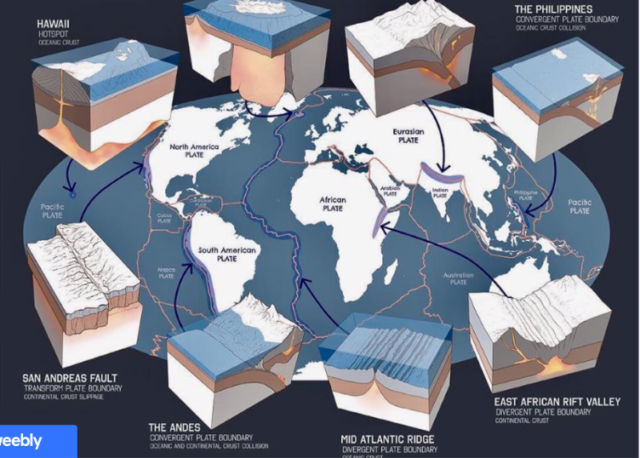
Photo https://warrengeography.weebly.com/plate-tectonics.html
To attempt to imagine the architecture of the planet and its furniture, walls, gaps and cracks is an enormous task. But then so is imagining geological time. The two sit well together and are brought closer by the intimate listening in to the interior noise coming to my ears of the super-fast, superhero, super fearless long travelling impact waves or waves of vibration/ sound.
Human’s and rock
Human and cultural attitudes to rock came into my explorations, so to somehow respond to the power of the energy generated from our rock/earth/planet, I looked towards a few human ideas of rock. My explorations took me to look at the way we look at rock /stone/ ground as not just an inert substance but a life form.
Bristol University’s the Presentation of Migrating Rocks Project Symposium . To explore some aspects of the importance of rock in cultural terms, I spoke to poet Alyson Hallett -Stone Talks /Triachy press, went to a Bristol University’s the Presentation of Migrating Rocks Project Symposium – September 2024 on the returning of sacred rocks to Aotearoa – New Zealand.
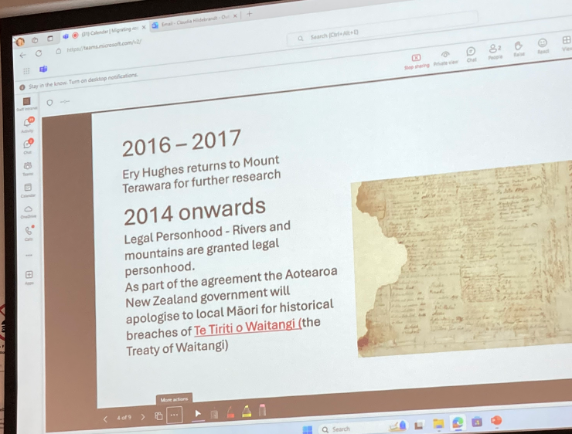
The treaty of Waitangi – on screen
I listened to Dr Rupert Till, University of Huddersfield aka Professor Chill on Radio 4 The Birth of Music (11.2024), discussing neolithic stone chambers and their importance for their spiritual life in the late stone age as well as exploring older artifacts and their ritual uses. First the resonating chambers at West Kennet Long Barrow Avebury Wiltshire from 5,500 thousand years ago seems to show that the barrow itself is a musical instrument. Till comments,
“…rituals for the neolithic the mediation between the living and the ancestral spirits was an important thing to mark bits of life or the transition from life into death are often intentionally made to be very visceral experiences that leave a very strong mark in the memory and the body of the individuals.” (Radio 4 The Birth of Music – 11.2024).
Musician, Mike Adcock generously allowed me to question him about his research for his book on Lithophones. He is interested in the idea of the material make up or structure of rock that will ring out sound. He spoke about Vietnam where they have found large boulders that specially ring when struck. Also, his travels to a remote village in West Java where he tracked down what was spoken about as the stone gamelan from ancient times. We spoke about our modern phrases such as being ‘stone dead’ for instance, and where the ‘animalistic’ spiritual beliefs hold a different connection with important rocks.
https://mikeadcock.com/articles/in-search-of-dan-da-and-the-mekong-lithophones-in-vietnam/
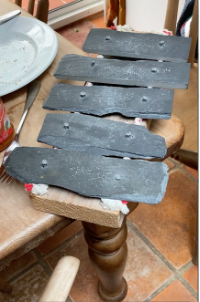
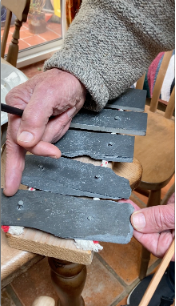
Homemade lithophone
My own experience is that the rock conveys the sound and vibration of the life of the earth. I wondered how it would be for me to write that sound back into the same material? Would it convey its own sound? How do I feel cutting into it with this information? What would an onlooker think about the sound of the earth being heard coming from rock? Would the age of the material be evident? Will the intimacy of listening to its ‘sound’ bring the onlooker any closer to the understanding of their planet and the timetable of the planet’s geological life?
Some rocks contain the mineral zircon that allows for carbon dating. The rocks therefore themselves contain the where with all to retain information about earth’s early history, and dating back to 4,375 billion years ago, providing insights into the Hadean Eon.
“Hadean time is not a geological period as such. No rocks on the Earth are this old – except for meteorites. During Hadean time, the Solar System was forming, probably within a large cloud of gas and dust around the sun…..”https://ucmp.berkeley.edu/precambrian/hadean.html
Although seemingly random, the research into these three rock types in conjunction with the earthquake sound from the tectonic plates, has given me an overview of the very energy that exudes from rocks – a life force we are part of. In terms of time, the human species’ time spent on the planet is an infinitesimally small pin prick on the graph of geological time. And my perception of time is different again from other species of say a fly – living its own brief life span, although we are all small players in the life span of the earth. I hope there’ll somehow be a resonance of some of these ideas concerning us and our planet in the newly cut sonic rock made for this project.
This is the last section of the Geological Time and Stone Turntable R&D project. Other parts of this R&D can be seen here on this website called The Groove, Sonic Rock Interactions, The Lizard is a lizard and Skin and Ice.
End







